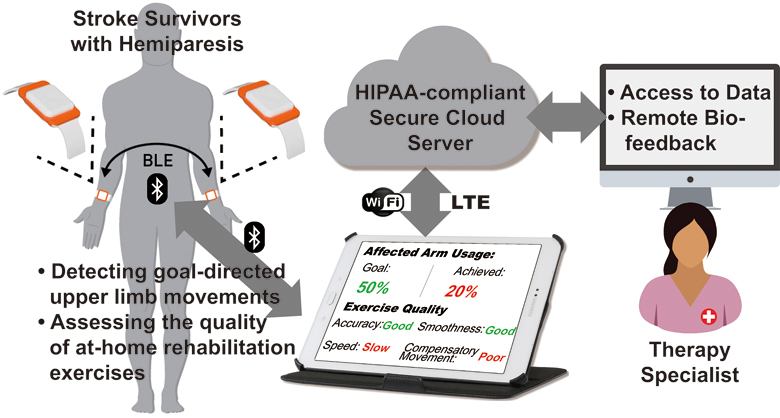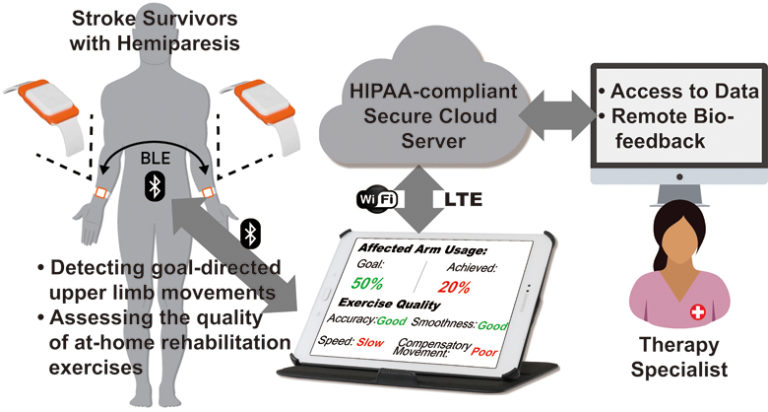Abstract

High-dosage motor practice can significantly contribute to achieving functional recovery after a stroke. Performing rehabilitation exercises at home and using, or attempting to use, the stroke-affected upper limb during Activities of Daily Living (ADL) are effective ways to achieve high-dosage motor practice in stroke survivors. This paper presents a novel technological approach that enables 1) detecting goal-directed upper limb movements during the performance of ADL, so that timely feedback can be provided to encourage the use of the affected limb, and 2) assessing the quality of motor performance during in-home rehabilitation exercises so that appropriate feedback can be generated to promote high-quality exercise. The results herein presented show that it is possible to detect 1) goal-directed movements during the performance of ADL with a c -statistic of 87.0% and 2) poorly performed movements in selected rehabilitation exercises with an F -score of 84.3%, thus enabling the generation of appropriate feedback. In a survey to gather preliminary data concerning the clinical adequacy of the proposed approach, 91.7% of occupational therapists demonstrated willingness to use it in their practice, and 88.2% of stroke survivors indicated that they would use it if recommended by their therapist.

